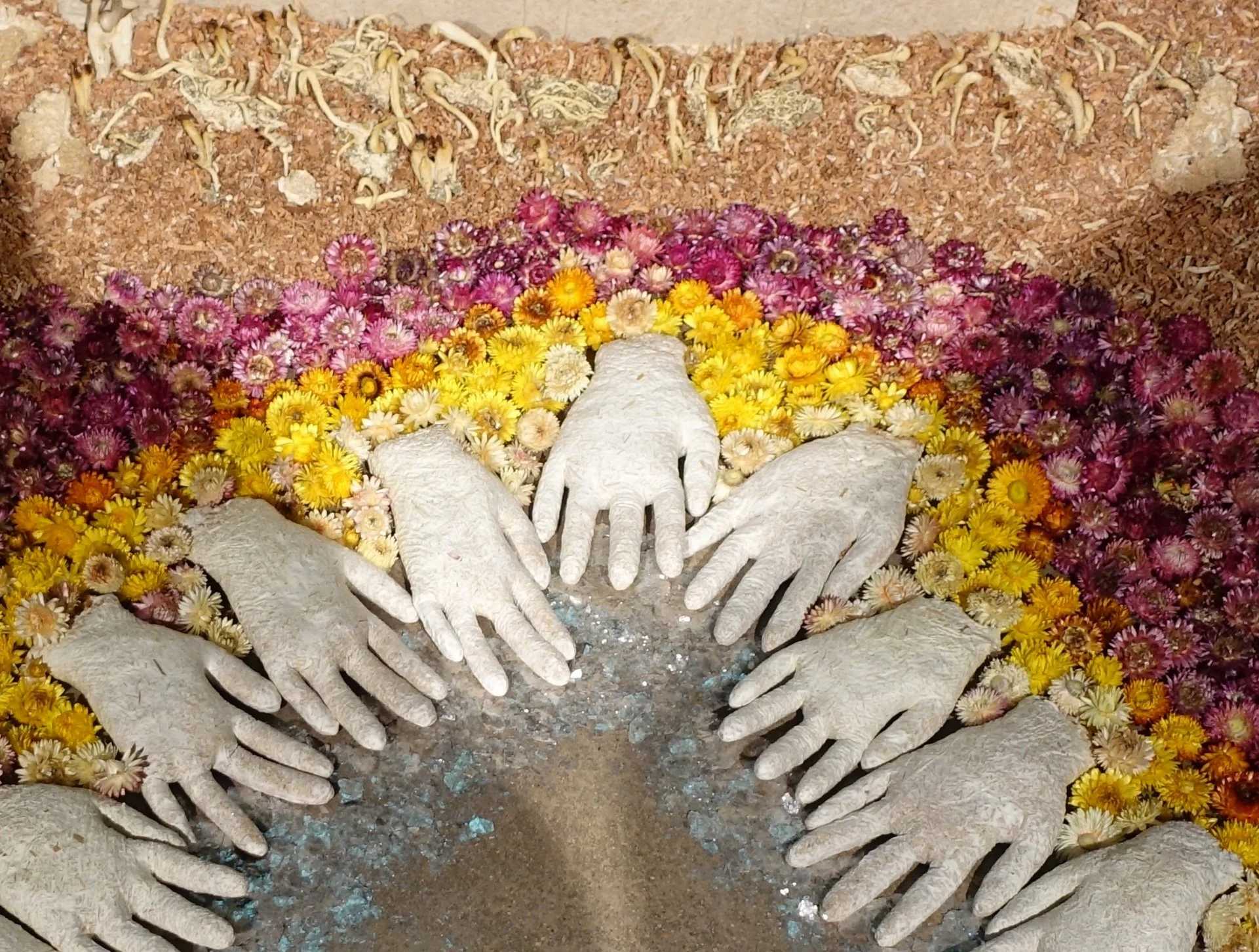Microscopic Photography, Drawing, Mycelium, Petri Dishes, Substrate, Flowers, Mica, Video (Arvada Center, 2023)
Mycelium, the vegetative part of fungi, has paved the way for life as we know it, breaking down rock to create rich soil while nourishing species over epochs, acting as stand-in
roots before plants possessed this trait. As the great equalizer of our planet, the unparalleled intricacy of mycelium’s design holds a nearly endless potential to remedy the effects of human created climate change. The scope of their bio-corrective capacities, correcting humanity’s outsized impacts, includes filtering bacteria out of water to clean soil, mycoremediation of toxic sites, mycofabrication of sustainable building materials, absorbing excess CO2 serving as a protein dense meat substitute, digesting harmful plastics, and tolerating—even thriving on radiation.
Only in recent decades have we evolved to appreciate the intricate, sophisticated network of mycelium communicating below us: forest networks sharing nutrients from the collective to support individual trees, transferring carbon, and communicating defenses in response to threats within mycelium’s capillary sprawl. Buried underground, the network is primarily concealed and out of our sight—operating with its own intelligence, not only in its symbiotic relationship with dense forests but also follows human patterns of settlement. Centimeters below our feet, there is an unspoken, one-sided route of communication between the mycelium network and humanity—as humanity continues to disrupt and build, and mycelium responds with restoration and adaptation.
As we move into an uncertain future with exponential climate disruption,
runaway pollution, and finite agricultural resources, mycelium will continue to play an
instrumental role in our survival as a species on earth. In this artistic exploration, the artists explore the idea of broadening our understanding of this being, and advance the narrative of mycelium. Mycelium as the silent narrator; we can reimagine our relationship with this planetary force, rightfully situating it as a central actor in our future as a nonhierarchical collaborator. They investigate a speculative existence and aim to invert the narrative paradigm—bringing mycelium to the surface to uncover the unseen.
1. Charcoal. Ingredient for petri dish substrate pigment.
2. Dextrose. Ingredient for petri dish substrate nutrient.
3. Agar. Ingredient for solidifying petri dish substrate.
4. Different stages of active growing Blue Oyster (Pleurotus Columbinus) mycelium in petri dish substrate. Newest to oldest specimens from left to right.
5. Different stages of active growing Reishi (Ganoderma lingzhi) mycelium in petri dish substrate. Newest to oldest specimens from left to right.



